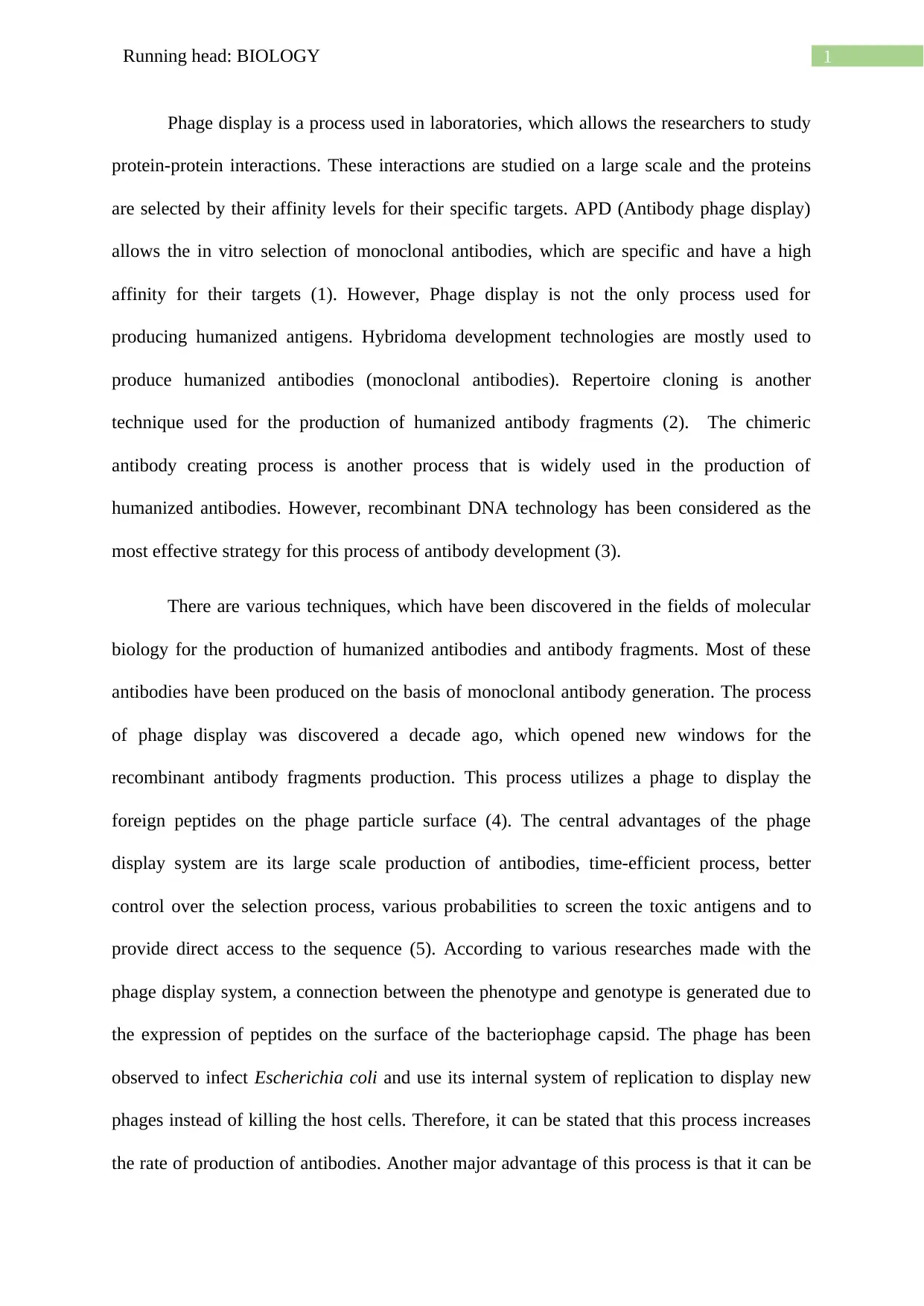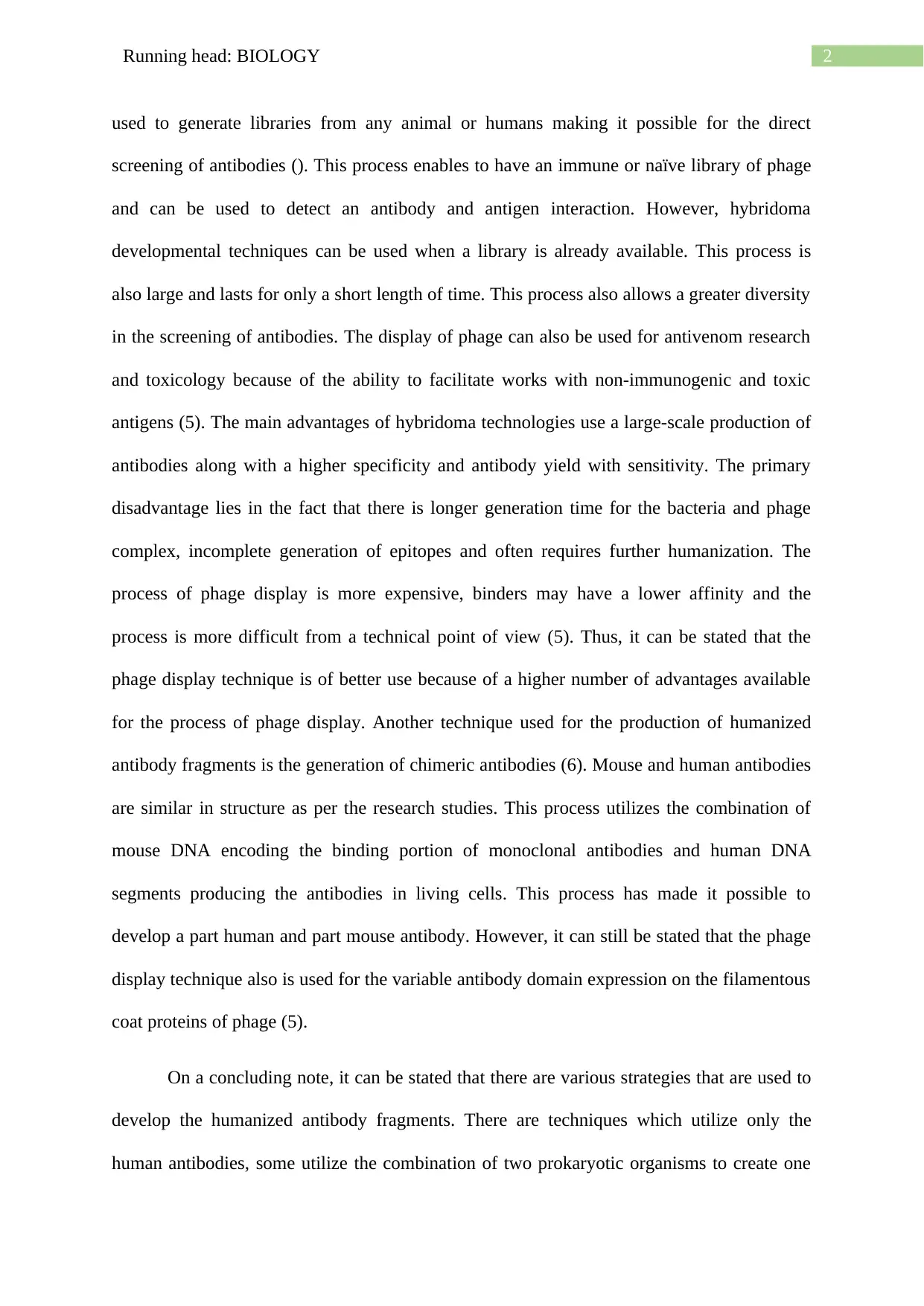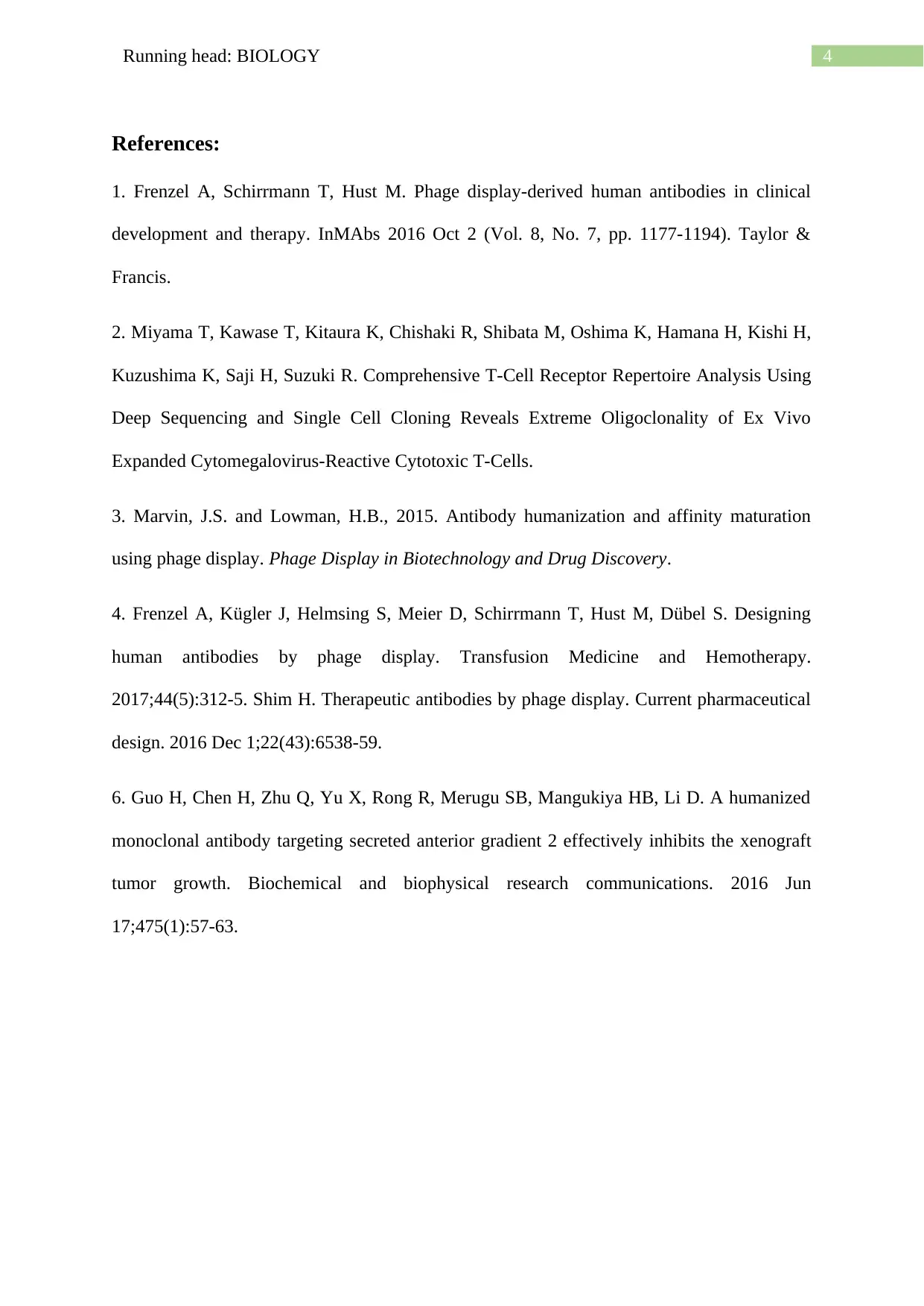University Biology Report: Phage Display and Antibody Development
VerifiedAdded on 2022/09/01
|5
|1102
|24
Report
AI Summary
This report delves into the phage display technique, a crucial process used in laboratories for studying protein-protein interactions, particularly in the context of antibody production. The report highlights the advantages of phage display, such as large-scale antibody production, time efficiency, and better control over the selection process. It compares phage display to other techniques like hybridoma development and chimeric antibody creation, emphasizing the role of recombinant DNA technology. The report discusses the process of phage display, which involves displaying foreign peptides on phage particle surfaces, enabling the screening of toxic antigens and providing direct access to the sequence. It also explores the applications of phage display in various fields, including antivenom research and toxicology. Finally, the report concludes that phage display is an effective technique for the development of humanized antibodies, supported by the references provided.
1 out of 5









![[object Object]](/_next/static/media/star-bottom.7253800d.svg)